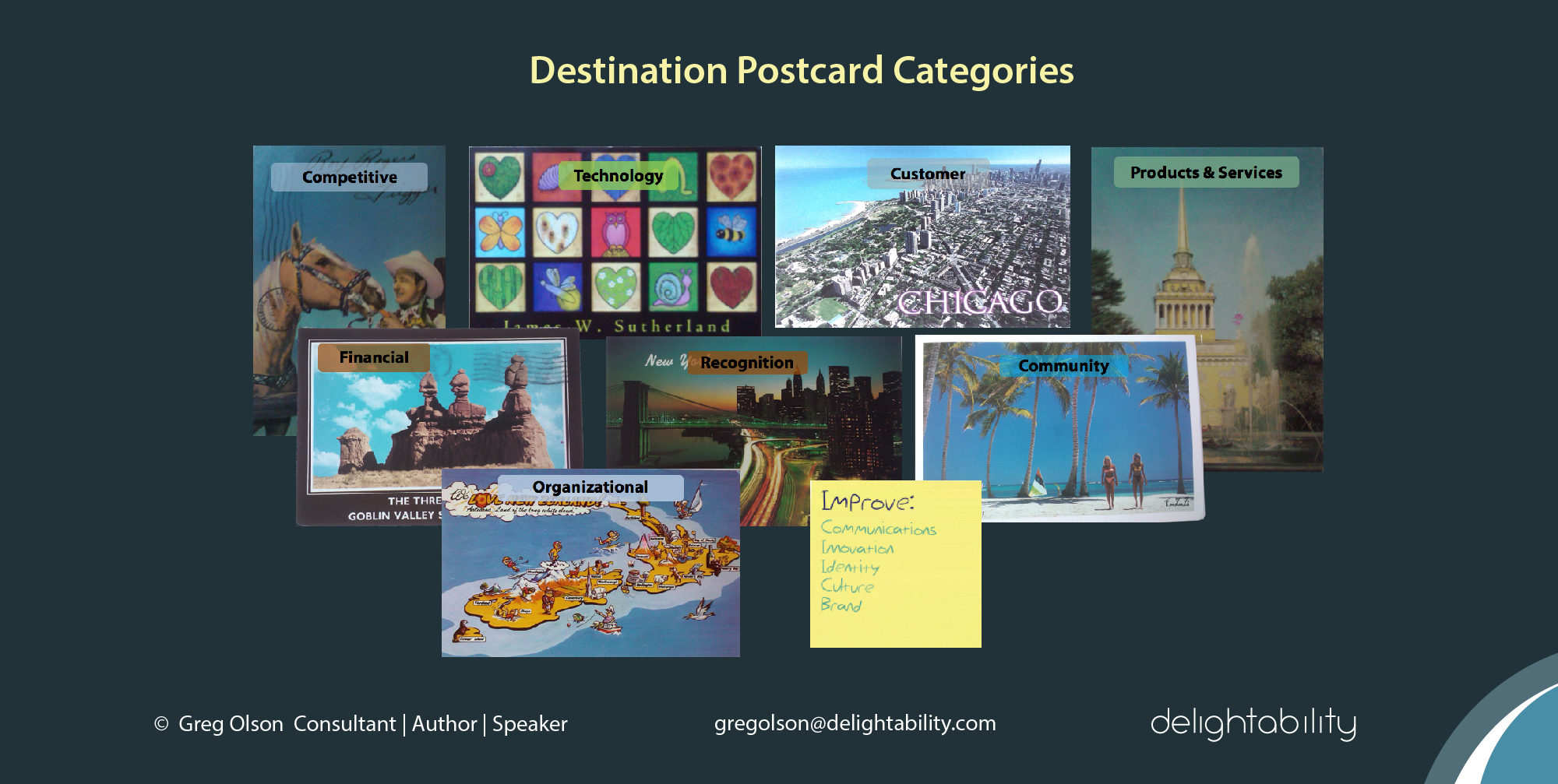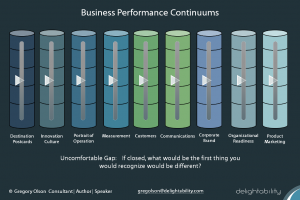Automobiles, machinery, and precision instruments at times need to be tuned and calibrated to ensure performance. Life and business have similar demands. If you aren’t concerned about performance then whatever you’re doing is adequate. But, periodically in your life and in your business you’ll want to re-evaluate strategies that are misfiring, products and services that seems amiss, a launch that falls short, an identity that isn’t working, communications that don’t connect, recognition that is absent, etc.
When there is an uncomfortable enough performance gap, then you’ll do something different. This is true in life and in business. Mid point in a calendar year is a natural point to reflect on the first half and project forward what you’d like to have happen by year-end. You may have a similar cycle with your financial planner and dentist. But, what about the rest of you and your business?
There are plenty of tools and conversations you can use. The key is to start. Once you begin it is easier to keep going and pretty soon you’ll be closing the uncomfortable gap just as you avoid toothaches and worse with periodic checkups and cleaning.
Here is a 7-Step Action Plan for a Business Performance Tune-Up
- Revisit your strategic imperatives for the year – what were the big bets for the year and are they paying off? Didn’t really have any solid strategic initiatives? Now would be a good time to establish some. Get clear on the destination: where are you going and what does success look like? See related post: Make Work Feel Like Vacation
- What have you learned and how can you apply it? Consider both the business landscape and the customer ecosystem. Organizational immaturity and old habits and patterns may get in the way of identifying and leveraging the talent and resources available in the business landscape. Also, if you don’t have personas to represent your various stakeholders now would be a good time to prioritize their development. Personas provide representative profiles for a customer base and other stakeholders too, e.g. investors, employees, partners, etc. As a design tool, they are a powerful way to visualize and communicate behaviors, goals, wants, needs, and frustrations.
- Get clear on your audiences and priorities: what promises will you make and keep and to which audiences? Make visible your Promise Delivery System for each of your stakeholders. The Promise Delivery System is a closed loop system that revolves around an audience and includes strategy, delivery, validation, and learning. You have a Promise Delivery System for each stakeholder that is served as well as those who serve. This is the subject of CH 8 in the Experience Design Blueprint.
- Define deliverables: what will you produce and deliver to keep your various promises? Think products, services, events, campaigns, programs, and communications.
- How does all of this line up against the calendar? What will be your day-to-day operational reality? What will your organization invest its time and resources into?
- Establish operating mechanisms: how will you stay on track and maintain your Promise Delivery System? What will be the rhythm and pace of the organization? Revisit your operating mechanisms and calendaring processes and events to ensure excellence in execution. Create an operating mechanism to capture ideas that may come at inconvenient times. Also, create an operating mechanism to evaluate and advance ideas. These are important to maintain (or establish) a culture of innovation.
- Revisit your performance metrics. How are you keeping score? If any of your metrics are irrelevant, modify them. If something is working well and appears to be a bright spot, then do more of it. Dial-up the activities that drive desired metrics. Stay focused on those areas where you have uncomfortable gaps between current performance and desired performance. See related post: Business Performance Continuums. Identify experiments you can run to test ideas for value. These represent quick trips around the Promise Delivery System.
You wouldn’t be comfortable flying in a commercial airliner that doesn’t receive maintenance and performance tuning. Your business is no different. Don’t let you customers, employees, and partners suffer through an under-performing business, especially when many of them would love to be engaged in a solution path to higher performance.
“Drive thy business, let not that drive thee.”
Benjamin Franklin
Author, Printer, Scientist, Musician,
Inventor, Satirist, Civic Activist,
Statesman, and Diplomat
(1706 – 1790)
Ben Franklin said it well, “Drive thy business, let not that drive thee.” Leadership sets the tone and begins the conversation. If you’d like some brainshare and assistance shoring up your strategy and designing deliverables to accompany that strategy, then please contact me.
about the author
Gregory Olson authored The Experience Design Blueprint, a book about designing better experiences and then making them come true. Exercises and mental models in the book will build your confidence and competence in envisioning better possibilities and then making them come true, whether you are working alone or alongside a team. Chapters in the book that especially pertain to this article include:
- Chapter 2: Make the Customer Come Alive
- Chapter 3: Who is in the Sandbox?
- Chapter 8: The Promise Delivery System
- Chapter 9: The Neighborhood
- Chapter 11: Barriers to Innovation and Overcoming the Wall
- Chapter 13: Taking Flight
- Chapter 14: The World of Work has Changed (see Glimpse)
- Chapter 15: From Argh to Aha!
Read The Experience Design Blueprint on Kindle or any device using the free Kindle Reader application or read the full color print edition.
Gregory Olson’s latest book is L’ impossi preneurs: A Hopeful Journey Through Tomorrow, a light-hearted and deadly serious book about a brighter future where we live more meaningful lives, governments invest in people and sustainable progress, and technology serves humans.
 Gregory Olson founded strategy and design firm Delightability, LLC. with the belief that if you delight customers then success will follow. He believes that we all have the potential to do better, as individuals, organizations, and communities, but sometimes we need a little help. Gregory also serves as a volunteer board member for Oikocredit Northwest, a support association for social and impact investor, Oikocredit International.
Gregory Olson founded strategy and design firm Delightability, LLC. with the belief that if you delight customers then success will follow. He believes that we all have the potential to do better, as individuals, organizations, and communities, but sometimes we need a little help. Gregory also serves as a volunteer board member for Oikocredit Northwest, a support association for social and impact investor, Oikocredit International.



 Not all categories have the same importance. It really does depend on the type of organization, its current state, as well as the competitive and customer environment. See the related article on
Not all categories have the same importance. It really does depend on the type of organization, its current state, as well as the competitive and customer environment. See the related article on  By establishing the categories that are most important to the organization, you’ve appealed to rationale mind (the rider). In Switch vernacular, you’ve directed the rider by pointing to the destination. This is necessary, but not sufficient. Next, you’ll want to appeal to the emotional elephant; you’ll not reach your destination without the elephant.
By establishing the categories that are most important to the organization, you’ve appealed to rationale mind (the rider). In Switch vernacular, you’ve directed the rider by pointing to the destination. This is necessary, but not sufficient. Next, you’ll want to appeal to the emotional elephant; you’ll not reach your destination without the elephant.

 Gregory Olson founded strategy and design firm Delightability, LLC. with the belief that if you delight customers then success will follow. He believes that we all have the potential to do better, as individuals, organizations, and communities, but sometimes we need a little help. Gregory also serves as a volunteer board member for
Gregory Olson founded strategy and design firm Delightability, LLC. with the belief that if you delight customers then success will follow. He believes that we all have the potential to do better, as individuals, organizations, and communities, but sometimes we need a little help. Gregory also serves as a volunteer board member for 
 Gregory Olson founded strategy and design firm Delightability, LLC. with the belief that if you delight customers then success will follow. He believes that we all have the potential to do better, as individuals, organizations, and communities, but sometimes we need a little help. Gregory also serves as a volunteer board member for
Gregory Olson founded strategy and design firm Delightability, LLC. with the belief that if you delight customers then success will follow. He believes that we all have the potential to do better, as individuals, organizations, and communities, but sometimes we need a little help. Gregory also serves as a volunteer board member for